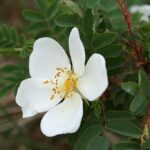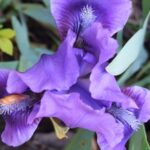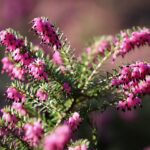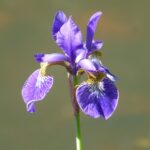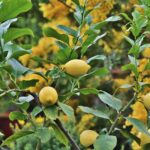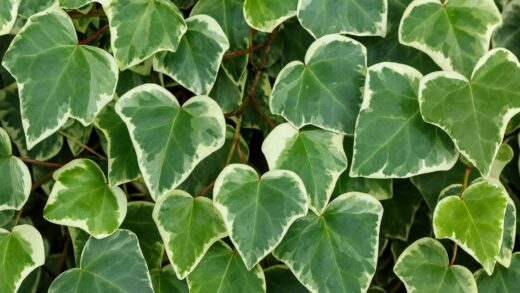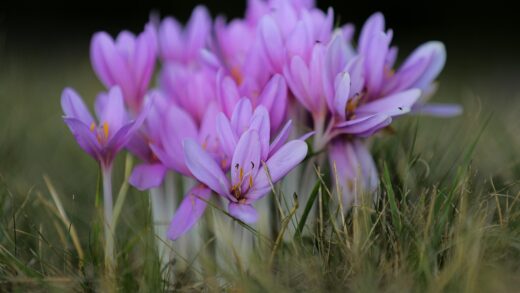Gerbera, this wonderful and widely beloved cut flower and potted ornamental plant, is unfortunately not immune to various diseases and pests. These pathogens and small creatures can cause significant economic damage to growers, both by reducing quality and quantity. Therefore, effective plant protection, which includes prevention and targeted treatments, is essential for successful gerbera cultivation. The application of integrated pest management (IPM) principles is crucial for environmentally friendly and sustainable farming, as this approach prioritizes biological and agronomic methods, recommending chemical interventions only when absolutely necessary and in a targeted manner.
Introduction to Gerbera Plant Protection
During gerbera cultivation, numerous environmental factors can influence the health status of the plants and their susceptibility to diseases and pest attacks. Inadequate light conditions, excessive or insufficient watering, unfavorable air temperature and humidity, as well as nutrient deficiencies or excesses, all represent stress factors for the plant. Such weakened plants are much less resistant to pathogens and pests. Soil quality, structure, and pH also play a critical role in maintaining root system health, which directly impacts the vitality of the entire plant. Therefore, applying proper cultivation technology is the first and most important step in prevention.
Early detection of diseases and pests is vital for successful control, as it can prevent the problem from worsening and spreading throughout the crop. Regular, careful inspections should be carried out, paying particular attention to the undersides of leaves, flowers, and the base of the plant, where the first signs of pests and diseases often appear. A hand lens can be a useful tool for identifying tiny pests or the initial symptoms of diseases. It is advisable to keep records of observed problems, symptoms, and the number of affected plants to track the situation’s development and the effectiveness of control measures.
Integrated Pest Management (IPM) is a comprehensive approach that prioritizes methods with the lowest possible risk to the environment and human health in gerbera protection. This strategy is based on prevention, biological control, optimization of agronomic techniques, and regular monitoring. Chemical plant protection products are used only when absolutely necessary and to the extent required, with preference given to selective, environmentally friendly preparations. An important element of IPM is also the use of resistant varieties, proper crop rotation, and adherence to hygiene rules.
Prevention is always more effective and economical than treating already established infections or pest infestations. Prevention includes using healthy planting material from verified sources, regularly cleaning and disinfecting cultivation equipment and tools, and ensuring optimal growing conditions for the plants. Avoiding overcrowding, ensuring adequate ventilation, and minimizing leaf wetness also contribute to reducing the likelihood of disease outbreaks. Proper soil preparation, possible disinfection, and balanced nutrient supply are fundamental preventive steps for maintaining gerbera health.
More articles on this topic
Fungal Diseases and Their Management
Gerberas can be attacked by numerous fungal diseases, which can cause significant damage to both foliage and flowers, and can even lead to the death of the entire plant. Among the most common fungal diseases are gray mold, powdery mildew, Fusarium wilt, and Phytophthora root and crown rot. The development of these diseases is usually favored by high air humidity, inadequate air circulation, overwatering, and plant injuries. Symptoms of fungal infections can vary, including spots on leaves, a coating on plant parts, wilting, or rot.
Gray mold, caused by Botrytis cinerea, is one of the most widespread and damaging fungal diseases of gerbera, especially in humid, cool conditions. A characteristic symptom is the appearance of watery spots on flower petals, leaves, and stems, on which a gray, velvety mold later develops. Infection often begins through wounds or on aging plant parts and can spread rapidly, especially in dense stands. The basis of control is prevention: reducing air humidity, ensuring adequate ventilation, removing dead plant parts, and carefully watering plants, avoiding wetting the foliage. In case of severe infection, the application of specific fungicides may be necessary.
Powdery mildew is another common fungal disease that can be caused by several different fungal species on gerbera. The most noticeable sign of infection is a white, powdery coating on the upper surface of the leaves, sometimes also on the lower surface, as well as on stems and buds. These spots can later merge, and leaves may become distorted, yellow, and fall广告 prematurely, leading to a weakening of the plant. The spread of powdery mildew is favored by warm, humid, but not overly wet environments, and densely planted plants are particularly susceptible. Control includes choosing resistant varieties, ensuring good air circulation, avoiding excessive nitrogen fertilization, and applying sulfur-based or other specific fungicidal preparations.
Fusarium wilt (Fusarium oxysporum) and Phytophthora root and crown rot (Phytophthora cryptogea or P. cactorum) are extremely dangerous diseases that attack the root system and vascular tissues of gerbera. Fusarium infection typically occurs through the roots, after which the pathogen moves up into the vascular tissues, clogging them, which causes rapid wilting, yellowing, and death of one side of the plant or the entire plant; a brownish discoloration of the vascular bundles can be observed in a cross-section of the stem. Phytophthora rot causes rotting of the roots and crown, plant wilting, yellowing, and stunting, especially in poorly drained, overwatered soils. Controlling both diseases is difficult; emphasis should be placed on prevention, such as using sterile growing media, immediate removal of infected plants, avoiding overwatering, and ensuring good soil drainage. Certain soil disinfectants and specific fungicides can also help manage the problem.
More articles on this topic
Bacterial and Viral Diseases
In addition to fungal diseases, bacteria can also cause serious problems in gerbera cultivation. Bacterial infections often penetrate the plant through small wounds on the plant surface, water droplets, or natural openings. Typical symptoms include leaf spots, which can be watery, dark-colored, or surrounded by a yellow halo, as well as rotting and sliminess of stems and flowers. The spread of bacteria is greatly facilitated by high humidity, splashing water (e.g., from overhead irrigation), and inadequate hygiene.
One common bacterial disease is bacterial leaf spot, caused by Pseudomonas cichorii. This pathogen causes dark brown or black, irregular, watery spots on the leaves, which may later dry out and crack; in severe cases, it can also infect flowers, causing their deformation and rot. The infection spreads particularly rapidly if the foliage remains persistently wet, for example, due to overhead irrigation or high air humidity. The key to control is prevention: avoid wetting the foliage, ensure good air circulation, and adhere to hygiene regulations. Spraying with copper-based products can help limit the spread of the disease, but removal of infected plant parts is also essential.
Viral diseases can be particularly insidious as there are often no effective, direct control methods within the plant once it is infected. Symptoms of viral infections are extremely varied: mosaic patterns on leaves (alternating lighter and darker green areas), ring spots, leaf curling, stunting, flower deformations, and color changes. Viruses are most commonly spread by vectors such as aphids, thrips, or nematodes, but can also be transmitted mechanically via infected plant sap, tools, or even human hands. Virus-infected plants are usually incurable, so the emphasis is on prevention and controlling the vectors that transmit them.
Numerous virus species can infect gerbera, including Tomato Spotted Wilt Virus (TSWV), primarily transmitted by western flower thrips, and Cucumber Mosaic Virus (CMV), carried by aphids. Typical symptoms of TSWV include concentric ring spots on leaves, bronze-colored lesions, and stunted growth, while CMV can cause mosaic patterns, leaf distortion, and streaking on flower petals. The most important elements of virus control are the use of virus-free planting material, consistent control of vectors (thrips, aphids), immediate identification and destruction of infected plants, and strict adherence to cultivation hygiene, including regular disinfection of tools. Choosing resistant varieties, where available, can also contribute to reducing damage.
Common Animal Pests: Sucking Insects and Other Intruders
Gerbera plants are also threatened by numerous animal pests, among which sucking pests perhaps cause the most common and serious problems. These small creatures feed by sucking plant sap, which not only directly weakens the plant by depriving it of nutrients but also often injects toxic substances into the tissues or, even more dangerously, can transmit various viruses. The presence of sucking pests may be indicated by leaf distortion and yellowing, the appearance of honeydew (which leads to secondary sooty mold infections), and a general slowing of growth. Early detection and identification are crucial for effective control.
Aphids (Aphididae) are among the most common sucking pests of gerbera, primarily attacking young shoots, the undersides of leaves, and buds. These small, usually green, black, or yellowish insects form colonies and suck plant sap, causing leaf curling, yellowing, and shoot deformation. In addition to significant damage, they excrete honeydew, on which sooty mold develops, further reducing the plant’s assimilation surface and aesthetic value, and they are also known as virus vectors. Ladybugs or lacewings can be used for biological control, but in cases of more severe infestation, the application of insecticidal soaps, horticultural oils, or selective insecticides may be justified.
Thrips (Thysanoptera) are tiny, slender-bodied insects that are difficult to spot due to their hidden lifestyle, often hiding in flowers or leaf axils. Their feeding results in silvery or bronze discoloration on leaves, tiny black fecal specks, and distortions and color loss on flower petals. Western flower thrips (Frankliniella occidentalis) are particularly dangerous as they are primary vectors of the Tomato Spotted Wilt Virus (TSWV). Controlling them is challenging due to their cryptic nature and rapid reproduction; blue or yellow sticky traps can help monitor their presence and reduce their numbers, while predatory mites and bugs are used in biological control, and specific insecticides, such as spinosad-based products, can be used for chemical control.
The greenhouse whitefly (Trialeurodes vaporariorum) is another common and unwelcome guest on gerberas, especially in enclosed growing facilities. These small, white, moth-like insects settle on the undersides of leaves and fly up when the plant is disturbed. As a result of their feeding, leaves turn yellow and weaken, they excrete honeydew on which sooty mold develops, and they are also capable of transmitting viruses. They reproduce rapidly, so an infestation can quickly become severe. Yellow sticky traps can be used for monitoring flight and reducing adult numbers, the parasitic wasp Encarsia formosa can be used for biological control, while for stronger infestations, horticultural oils, insecticidal soaps, or, if necessary, systemic insecticides may be considered.
Other Significant Pests and Control Strategies
Spider mites (family Tetranychidae), especially the two-spotted spider mite (Tetranychus urticae), are tiny arachnid pests that feed on the undersides of gerbera leaves. Their presence is indicated by small, yellowish or whitish dots on the leaves, later by bronzing, drying of leaves, and the appearance of fine webbing. Warm, dry conditions favor their proliferation, making them a common problem in greenhouses and polytunnels. Their damage reduces the plant’s photosynthetic activity and overall vitality. Important control elements include increasing air humidity, removing infested leaves, and applying specific miticides or predatory mites (Phytoseiulus persimilis).
The larvae of leafminers (family Agromyzidae) live inside gerbera leaves, creating characteristic, winding tunnels, so-called mines, within the leaf blade between the epidermal layers. Although their direct damage is usually not fatal to the plant, they significantly reduce the aesthetic value of the leaves, and in cases of heavy infestation, the plant may weaken due to the reduction of the photosynthetic surface. Adult flies are small and difficult to spot. In control, early removal and destruction of infested leaves can help reduce the population. In more severe cases, the application of systemic insecticides or parasitic wasps can also be effective.
Nematodes (Nematoda) are microscopic worms living in the soil or plant tissues, several species of which can damage gerbera. Root-knot nematodes (Meloidogyne species) cause characteristic swellings, or galls, on the roots, which hinder water and nutrient uptake, so the plant’s growth slows, it wilts, and turns yellow. Foliar nematodes (Aphelenchoides species) live in the leaves, causing angular, vein-delimited spots that are initially yellowish, later turning brown and necrotic. Controlling nematodes is difficult; prevention is important, such as using nematode-free planting material and growing media, soil steaming or solarization, and choosing resistant varieties. Certain biological preparations and nematicides are also available.
The basis of successful plant protection is the thoughtful, integrated application of various control strategies. This includes regular and thorough monitoring of pests and diseases, which allows for early detection of problems and accurate determination of the need for intervention. Agronomic methods, such as proper variety selection, crop rotation, soil cultivation, irrigation, and nutrient management optimization, all contribute to increasing plant resistance. Biological control, i.e., the use of natural enemies (predators, parasitoids) and beneficial microorganisms, offers an environmentally friendly solution. Chemical control should only be applied in a targeted manner, when the damage threshold is reached, with the least harmful preparations, and in strict compliance with regulations.
Prevention and Maintaining Gerbera Health
In plant protection, prevention is always the most effective and economical strategy, as combating an already established, widespread disease or pest infestation requires far more resources and costs than preventing the problem. The essence of a proactive approach is to create conditions that are optimal for the gerbera and unfavorable for pathogens and pests. It is important to be aware that plants exposed to stress and weakened are much more susceptible to infections and pest attacks. Therefore, the focus of preventive measures is on maximally supporting the health and vitality of the plants.
Ensuring optimal growing conditions is fundamental to maintaining gerbera health and increasing its resistance to diseases. This includes providing adequate light intensity and duration, maintaining air temperature and humidity appropriate to the plant’s needs, and ensuring good aeration of the root zone. A balanced nutrient supply, containing all necessary macro- and micronutrients in the correct proportions, is essential for strong, healthy growth. Great attention must also be paid to irrigation techniques: overwatering, which can lead to root rot, should be avoided, and the time foliage remains wet should be minimized to reduce the risk of fungal and bacterial infections.
Hygiene of the growing medium and environment plays a crucial role in preventing diseases and pests. All used tools, pots, and work surfaces must be regularly cleaned and disinfected to prevent the transmission of pathogens. Diseased or suspected infected plant parts, fallen leaves, and flower petals must be immediately removed from the growing area and destroyed so they do not become sources of infection. Regular weed removal is also important, as weeds can often host various pests and pathogens that can spread to gerberas.
Choosing gerbera varieties that are resistant or tolerant to diseases and pests can significantly reduce the incidence and severity of plant protection problems. Plant breeders are constantly working to develop new varieties that have better resistance to the most common pathogens and pests. Although resistance does not always mean complete immunity, growing resistant varieties can reduce the need for chemical pesticides, contributing to more sustainable and environmentally friendly cultivation. Successful and healthy gerbera growing requires constant attention, care, and consistent application of preventive strategies, adapting to new cultivation knowledge and challenges.







